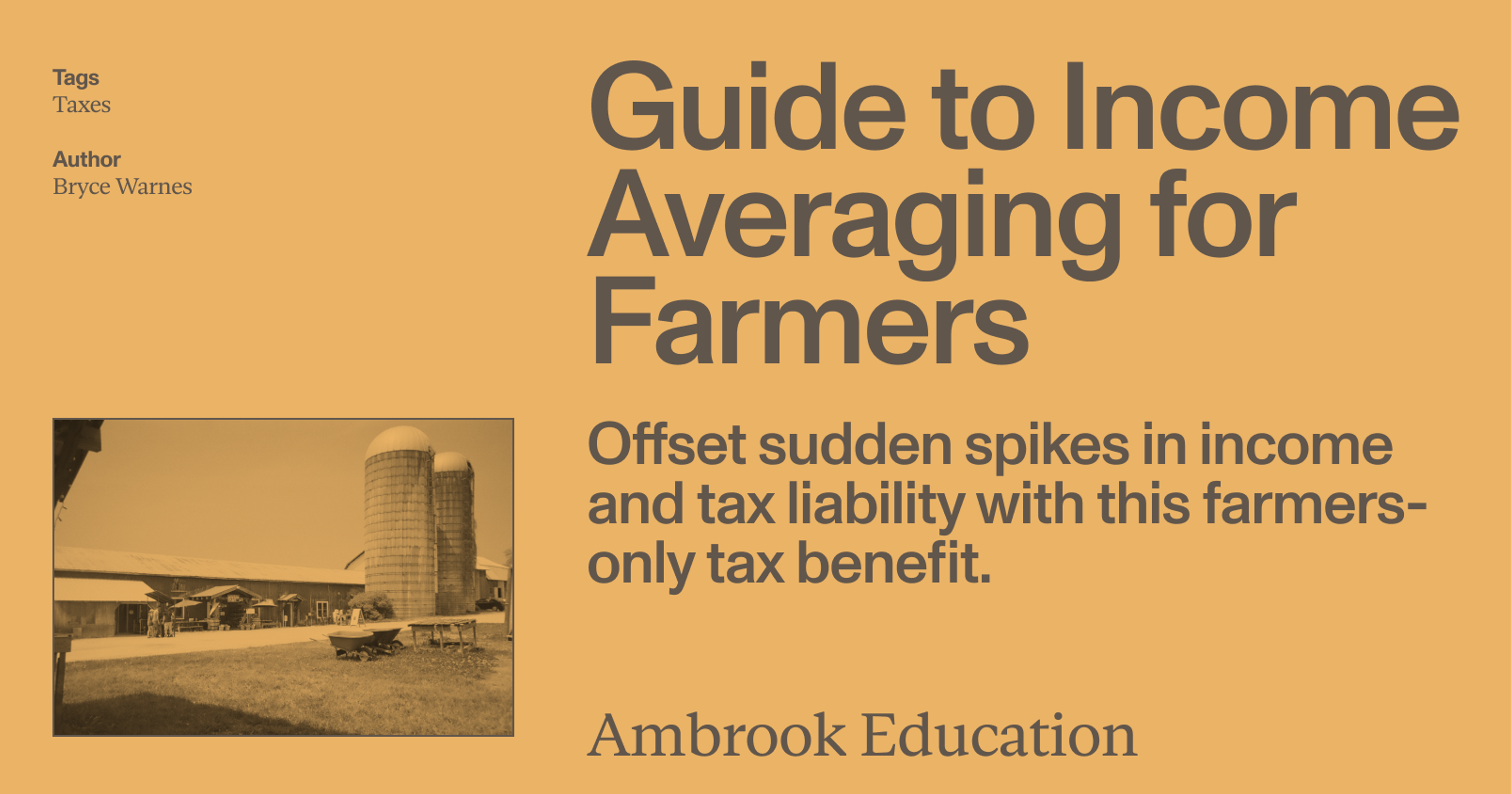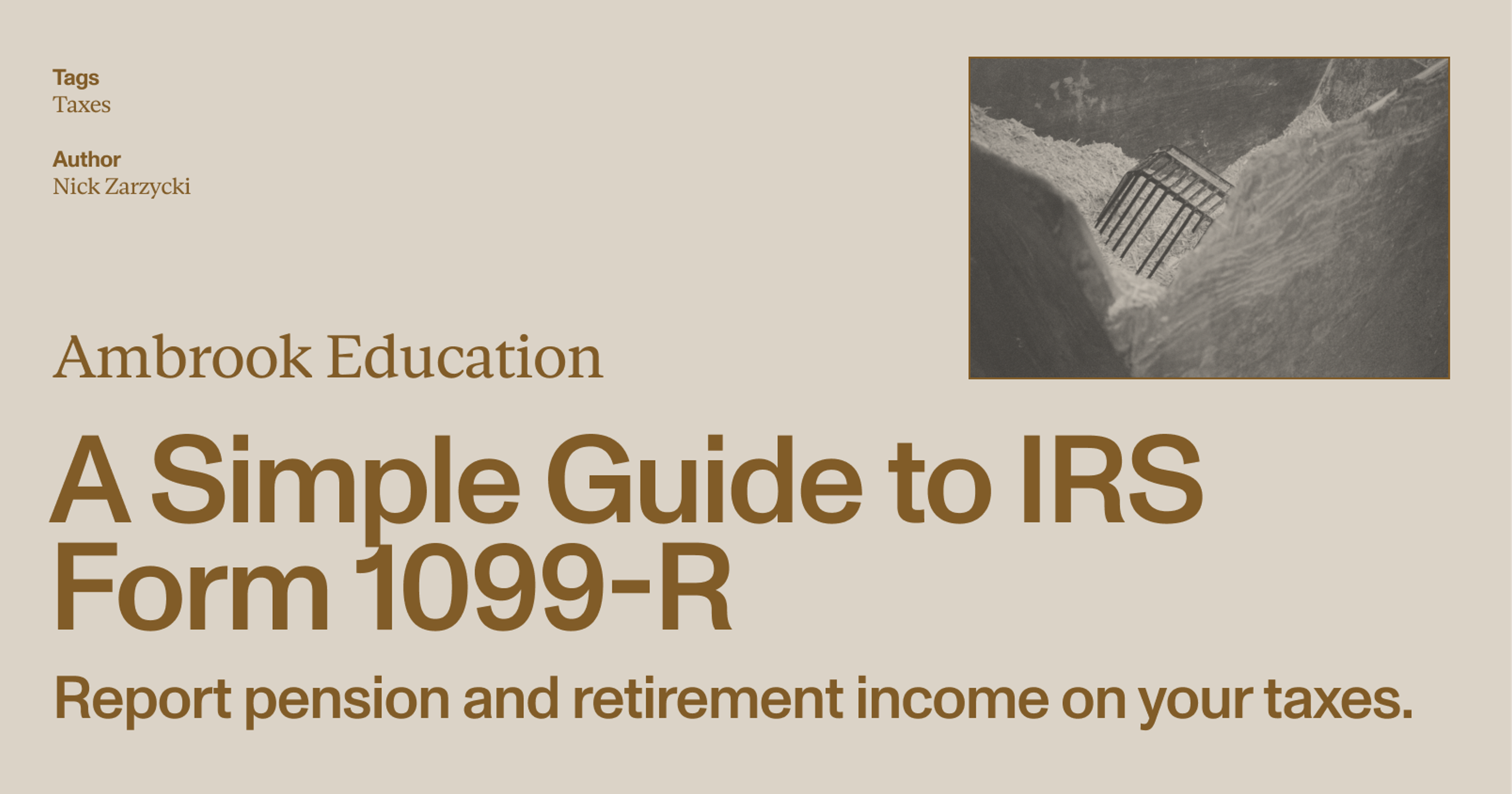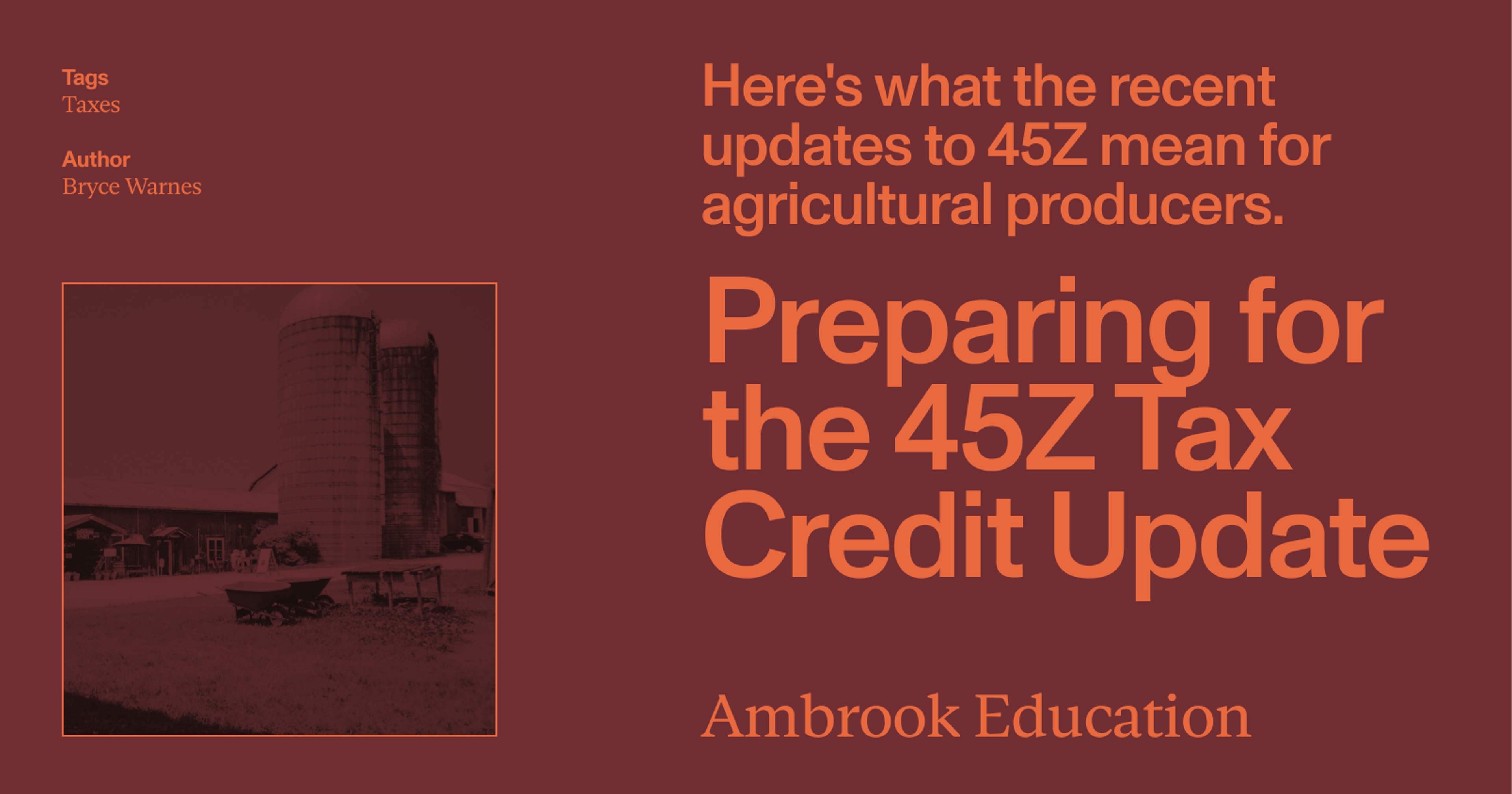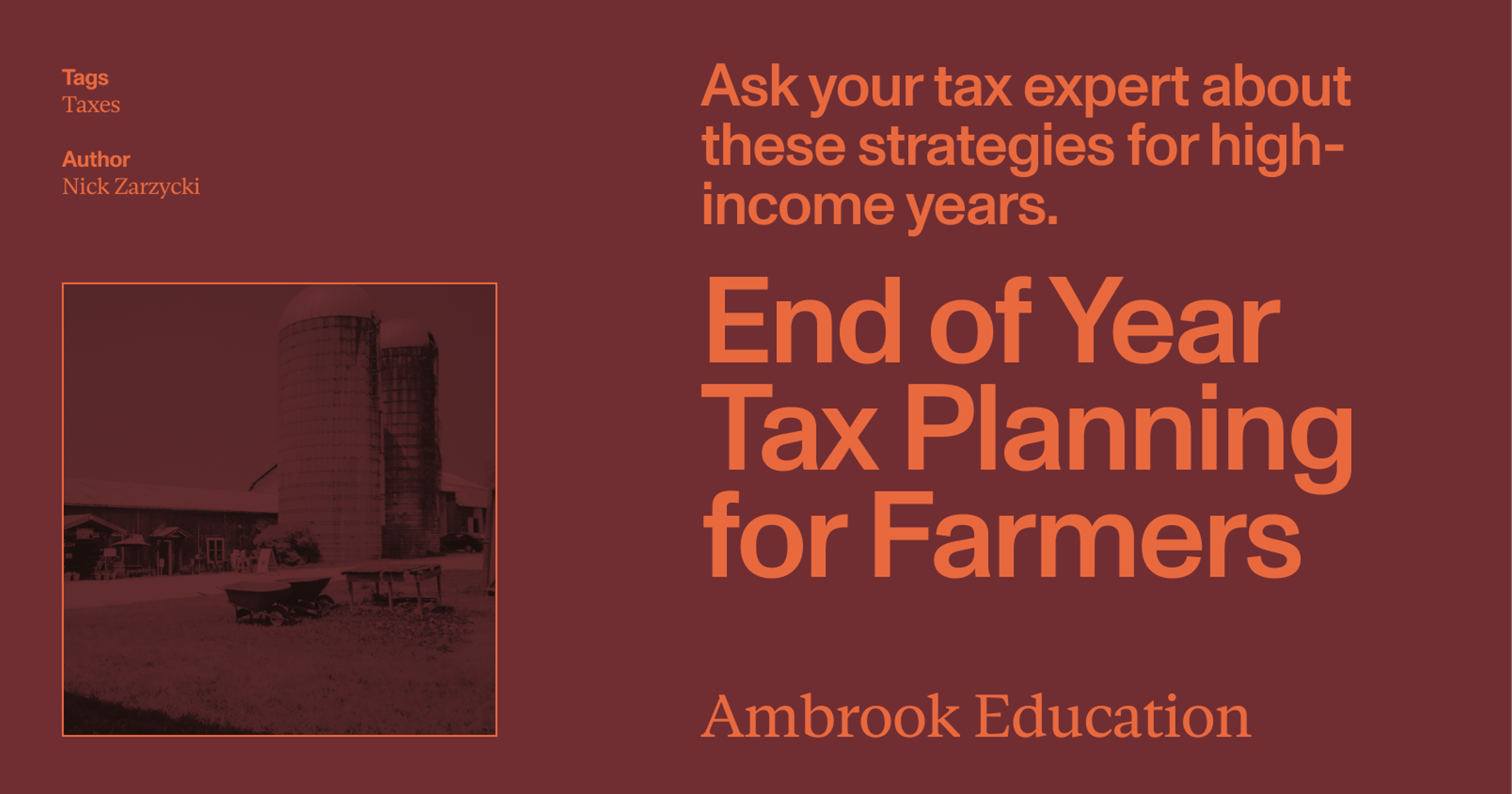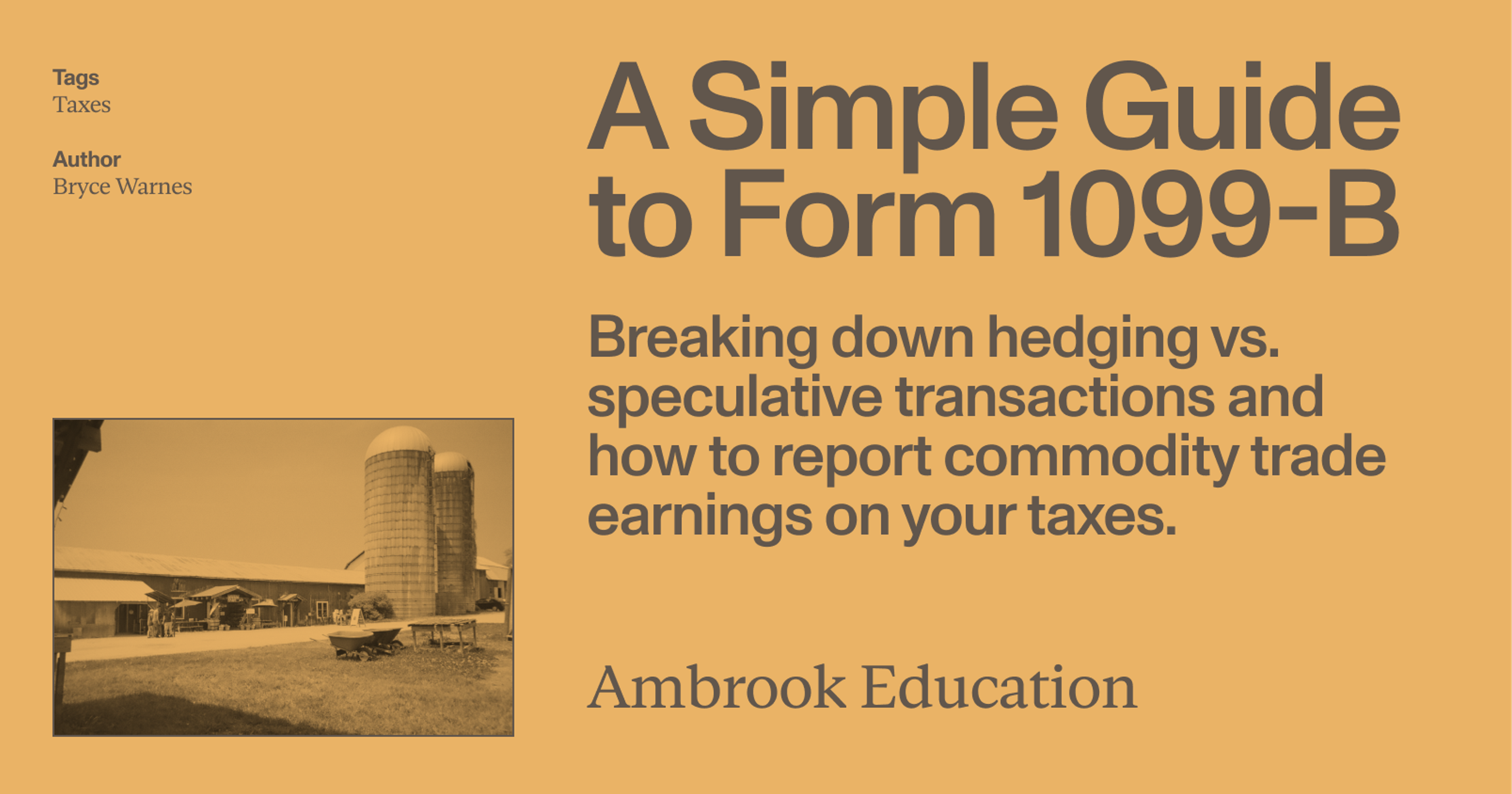Farming is an unpredictable business. Income averaging can help by smoothing out sudden spikes in your farm’s tax bill.
When you run your own farm or ranch, your income may fall or rise from one year to the next. A sudden spike in income could mean you land in a higher tax bracket than you have in the past. The result? A bigger tax bill than you expected.
Income averaging softens the blow. Using Schedule J (Form 1040), you can apply past years’ tax rates to your present year’s income. It requires a little extra legwork, but income averaging can save you thousands of dollars in taxes.
Here’s an overview of how income averaging works, when to use it, and how to figure the calculations with Schedule J.
What is income averaging for farmers?
Income averaging is a method of calculating your tax liability for the current year using the income tax rates from the three previous years (the “base years”). You make the calculations using Schedule J (Form 1040).
Income averaging is a special provision available only to farmers and commercial fishers. That being said, during the three base years you use to calculate your tax liability, you do not have to have been in the business of farming.
You calculate your income tax liability with income averaging after you calculate other tax liabilities, including self-employment tax. That is, your self-employment tax liability is based on your total income for the current year; it isn’t affected by income averaging.
Only individuals may use income averaging. Partnerships and corporations may not. If you are a partner in a farming operation, or if your farm is a corporation and you’re a shareholder—even if you’re the only shareholder—then you may apply income averaging to the income you earn personally from the farm.
When is it a good idea to use income averaging?
According to the USDA, a 2004 study found that on average farmers saved $4,434 with income averaging. This trend has continued in recent years, even if—as one USDA presentation notes—income averaging is generally underutilized by farmers.
Income averaging benefits you if your income for the current year—the year for which you’re filing your taxes—is higher than average. A higher than average income may push you into a higher tax bracket, increasing your income tax rate.
Your income may increase due to rising commodities prices, increased sales, or reductions in operating costs.
It could also be due to the realization of long-term capital gains. For instance, if you sell machinery or livestock for higher than the price paid, and you held those assets for 12 months or longer before selling them, you realize long-term capital gains. Capital gains are taxed at a different rate than regular income.
But Schedule J lets you include long-term capital gains in your elected farm income (EFI) and average them over the prior three tax years. That may lower your tax liability.
Who qualifies as a farmer?
In the eyes of the IRS, a farmer is anyone who earns a profit from their farm:
“The term ‘farm’ includes stock, dairy, poultry, fruit, furbearing animal, and truck farms, plantations, ranches, nurseries, ranges, greenhouses or other similar structures used primarily for the raising of agricultural or horticultural commodities, and orchards and woodlands.”
The IRS uses an extensive set of rules to determine what qualifies as farming and what does not. Most important are the hobby loss rules. They state that a farm is only a farm for tax purposes if it has a profit motive—that is, if it earns a profit.
If your farm failed to earn a profit in three of the last five tax years, the IRS considers it a hobby, not a business.
For more on hobby loss rules and the IRS’s definition of farming, check out Who’s Considered a ‘Farmer’ for Tax Purposes?
What is elected farm income (EFI)?
You’re only able to use income averaging on income earned from your farm. This is referred to as elected farm income (EFI)—income you elect (choose) to report as farm income on Schedule J.
Note that, besides regular farming activities, income you earn as a crop share landlord or for the sale of breeding animals qualifies as EFI.
Your EFI is the only income to which income averaging applies. For instance, if you have a job in town that pays $30,000 per year, and your farm earns $25,000 per year, you can only apply income averaging to the $25,000. The $30,000 is taxed at the normal tax rate for the current year.
How income averaging for 2024 works
For a detailed overview of income averaging, review Schedule J and read the IRS instructions for Schedule J.
For a general breakdown of how it works in 2024, read on.
To use income averaging and file Schedule J as part of your 2024 tax return, you’ll use 2021, 2022, and 2023 as your base years.
Here’s how you do it:
Calculate your total income.
Calculate your EFI.
Subtract your EFI from your total income.
Calculate your tax liability on the result of Step 3 (your non-EFI income) using 2024 tax rates.
Divide your EFI by three.
Add that amount (one-third of your EFI) to your income for each of your three base years (2021, 2022, and 2023). For years where you used income averaging, rather than adding ⅓ of your EFI to your actual taxable income for the year, you enter data from certain lines of that year’s Schedule J.
For each base year, calculate your total tax liability based on the result of Step 6 (your original taxable income, plus ⅓ of your EFI for the current year). Use the tax rates and brackets for the relevant base year to calculate this liability.
Add up the tax liability for all three base years.
Add your current year tax liability for non-EFI income (Step 4) to the amount calculated in Step 7.
Enter your actual tax liability (as reported on your tax return, and not including the ⅓ EFI from your current year) for each of the three base years.
Add up your total actual tax liability for the three base years.
Subtract the result of Step 8 from the result of Step 10.
The result of this calculation is your total tax liability, using income averaging, for 2024.
Tax rates for income averaging
Since you will use past years’ tax rates to average your income over multiple years, it helps to consult a table of rates:
| Rate | 2021 | 2022 | 2023 | 2024 |
|---|---|---|---|---|
| 10% | $0 – $9,950 | $0 – $10,275 | $0 – $11,000 | $0 – $11,600 |
| 12% | $9,951 – $40,525 | $10,276 – $41,775 | $11,001 – $44,725 | $11,601 – $47,150 |
| 22% | $40,526 – $86,375 | $41,776 – $89,075 | $44,726 – $95,375 | $47,151 – $100,525 |
| 24% | $86,376 – $164,925 | $89,076 – $170,050 | $95,376 – $182,100 | $100,526 – $191,950 |
| 32% | $164,926 – $209,425 | $170,051 – $215,950 | $182,101 – $231,250 | $191,951 – $243,725 |
| 35% | $209,426 – $523,600 | $215,951 – $539,900 | $231,251 – $578,125 | $243,726 – $609,350 |
| 37% | $523,601 or more | $539,901 or more | $578,126 or more | $609,351 or more |
Source: Tax Foundation
In practice, though, it’s easiest to calculate tax liability for past years using an online tax calculator.
Income averaging example #1
After years of struggling to get off the ground, your ranching operation and your part-time business (doing welding jobs out of your shop for local customers) are both returning record profits.
Your net income for 2024 is $100,000. Of that, $75,000 is from ranching and $25,000 from the welding business.
That’s a major improvement over previous years, but it also means increased tax liability. Here’s the calculation, using the online tax calculator linked above.
| Year | Income | Federal Income Tax liability |
|---|---|---|
| 2021 | $32,000.00 | $1,451.17 |
| 2022 | $22,000.00 | $599.66 |
| 2023 | $51,000.00 | $3,000.51 |
| 2024 | $100,000.00 | $8,840.00 |
You decide to use income averaging for the first time.
On Schedule J, you elect to have all $75,000 in agricultural earnings treated as EFI.
Then, you calculate the 2024 tax liability on your $25,000 non-agricultural income. It’s $657.50.
Now to apply income averaging to your farm income. First, you divide your EFI by three.
$75,000 ÷ 3 = $25,000
Next, you add that amount to each of the three base years’ taxable income:
For 2021: $32,000 + $25,000 = $57,000
For 2022: $22,000 + $25,000 = $47,000
For 2023: $51,000 + $25,000 = $76,000
Then you calculate the tax liability for each of those years, based on their relevant tax rates and income brackets, and add up the total:
| Year | Income + ⅓ EFI | Federal Income Tax liability |
|---|---|---|
| 2021 | $57,000.00 | $3,681.62 |
| 2022 | $47,000.00 | $2,744.54 |
| 2023 | $76,000.00 | $5,301.00 |
| Total tax liability: | $11,727.16 |
You also add your tax liability on your non-farm income of $25,000 to this amount:
$11,727.16 + $657.50 = $12,384.66
Next, calculate your total tax liability for the three base years before adding ⅓ EFI to each:
$1,451.17 + $599.66 + $3,000.51 = $5,051.34
Then subtract that amount from the tax liability to the modified years, plus your non-EFI tax liability:
$12,384.66 – $5,051.340 = $7,333.32
Your total tax liability for 2024, using income averaging, is $7,333.32.
Compared to what your tax liability would be if you didn’t use income averaging ($8,840.00), that’s a total savings of $1,506.68.
Income averaging example #2
The benefits of income averaging are cumulative. Sometimes, using income averaging for the current year will only result in minor tax savings. But as you add up your tax liability over multiple years, and compare it to how much you would have paid if you hadn’t used income averaging at all, you’ll see your savings grow.
For instance, following the previous example, if you had used income averaging for 2023 and not just 2024, your total savings would have been greater.
Here’s a demonstration. It uses data for the years 2021, 2022, 2023, and 2024 from the first example. It also includes figures for 2020, your first year in business:
| Year | Income | Federal Income Tax liability |
|---|---|---|
| 2020 | $14,000.00 | $48.88 |
| 2021 | $32,000.00 | $1,451.17 |
| 2022 | $22,000.00 | $599.66 |
| 2023 | $51,000.00 | $3,000.51 |
| 2024 | $100,000.00 | $8,840.00 |
Suppose that, instead of calculating your income as usual in 2023, you used income averaging based on the three prior base years.
In 2023, your income from ranching was $37,000, and your income from the welding shop was $14,000, for a total of $51,000 income.
If you repeat the income averaging steps from the first example using your income from 2023, you get a total tax liability of $3,032.01. That’s $31.50 more than it would have been using normal income reporting ($3,346.40 – $3,032.01 = $31.50). So it doesn’t make sense to elect income averaging for 2023.
If you did, your income averaging calculations for 2024 would be different from the first example. That’s because, when you use income averaging for any of your base years, the data you enter on your current year’s Schedule J will be based on those base years’ Schedule Js.
Since in this example you used income averaging in 2023, the data you enter on your Schedule J for 2024 will come from 2023’s Schedule J.
Namely, on your 2024 Schedule J, you add up the tax liability for:
Your 2021 income + ⅓ of your 2023 EFI + ⅓ of your 2024 EFI
Your 2022 income + plus ⅓ of your 2023 EFI + ⅓ of your 2024 EFI
Your non-EFI income for 2023 plus ⅓ of your 2024 EFI
If that sounds complicated, it is. That’s why most farmers work with a tax professional to handle the calculations.
Income averaging is a long-term strategy
Even if you don’t stand to save a significant amount in taxes by using income averaging for the current year, employing it now can result in greater overall savings as the years go by.
The best strategy, if you have never used income averaging before, is to use it for the current year and for all future years. You can even amend past years’ returns, applying income averaging now when you failed to do so in the past. That will affect the data you use on your current year’s Schedule J, and could result in greater savings overall.
That being said, no business is as simple as the one used in the example above; many factors will come into play in the real world. It’s even possible that some years you stand to pay more in taxes using income averaging than if you don’t. Consult with a qualified accountant before making any major tax moves.
How income averaging for 2025 works
Income averaging for the 2025 tax year follows the same model as it does for 2024.
The only difference is that your base years for filling out the 2025 Schedule J are 2022, 2023, and 2024. Also, your potential 2025 tax liability will be based on the tax brackets and rates for 2025:
| Rate | Bracket |
|---|---|
| 10% | $0 to $11,925 |
| 12% | $11,926 to $48,475 |
| 22% | $48,476 to $103,350 |
| 24% | $103,3510 to $197,300 |
| 32% | $197,301 to $250,525 |
| 35% | $250,526 to $626,350 |
| 37% | $626,351 or more |
Source: Tax Foundation
Use Ambrook for a better-than-average tax season
Income averaging is easier when you use Ambrook. All of your past years’ financial data—including copies of past returns—are available through your Ambrook dashboard. So, when tax season rolls around, you can focus less on tracking down data and more on choosing the tax option that saves you the most money.
Plus, with time-saving bookkeeping automation features, automatically-generated financial reports, streamlined bill pay and invoicing, and other powerful accounting and financial management tools, Ambrook doesn’t just make income averaging simple: it takes the guesswork out of running your business. Want to learn more? Schedule a demo today.
Want to learn more about Ambrook?
This resource is provided for general informational purposes only. It does not constitute professional tax, legal, or accounting advice. The information may not apply to your specific situation. Please consult with a qualified tax professional regarding your individual circumstances before making any tax-related decisions.

